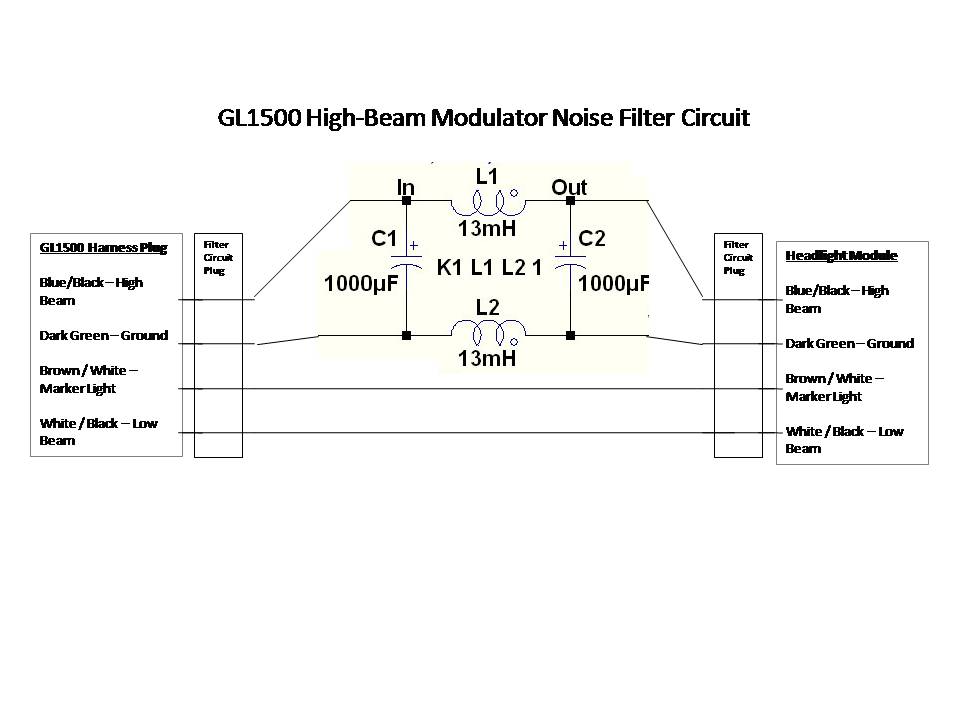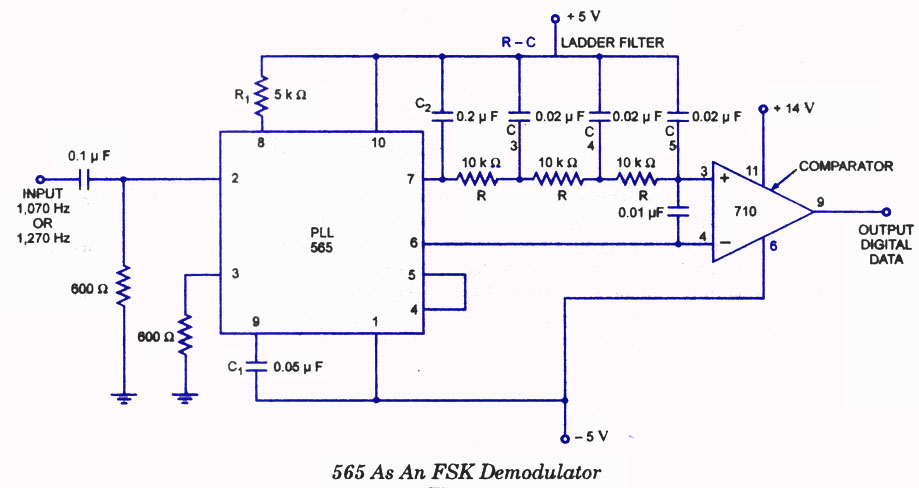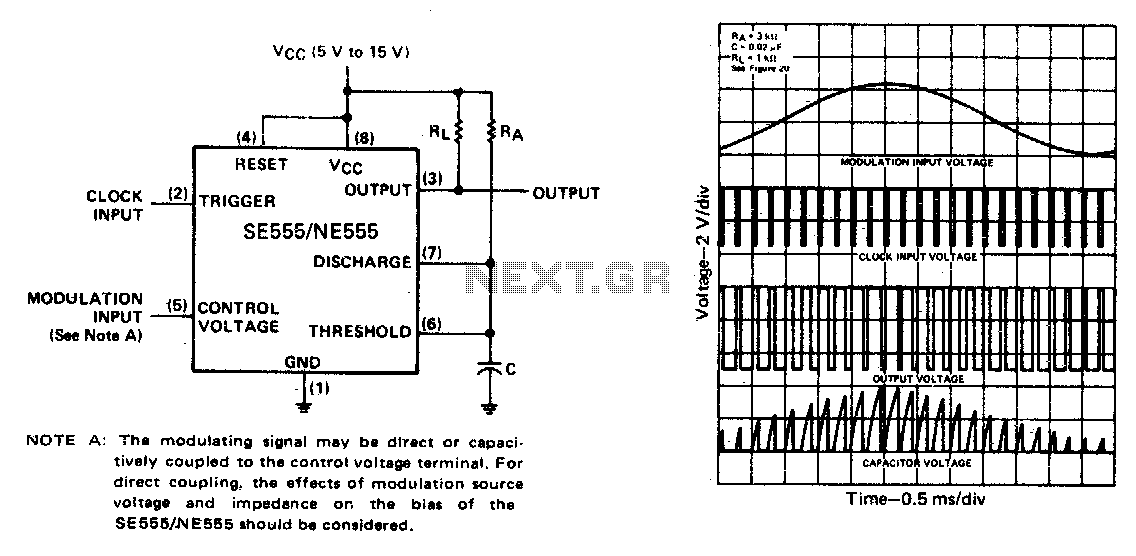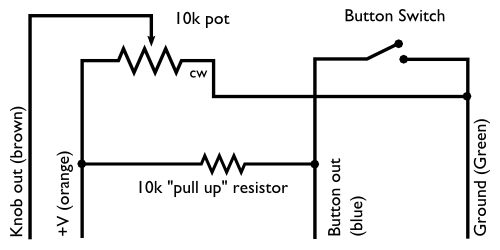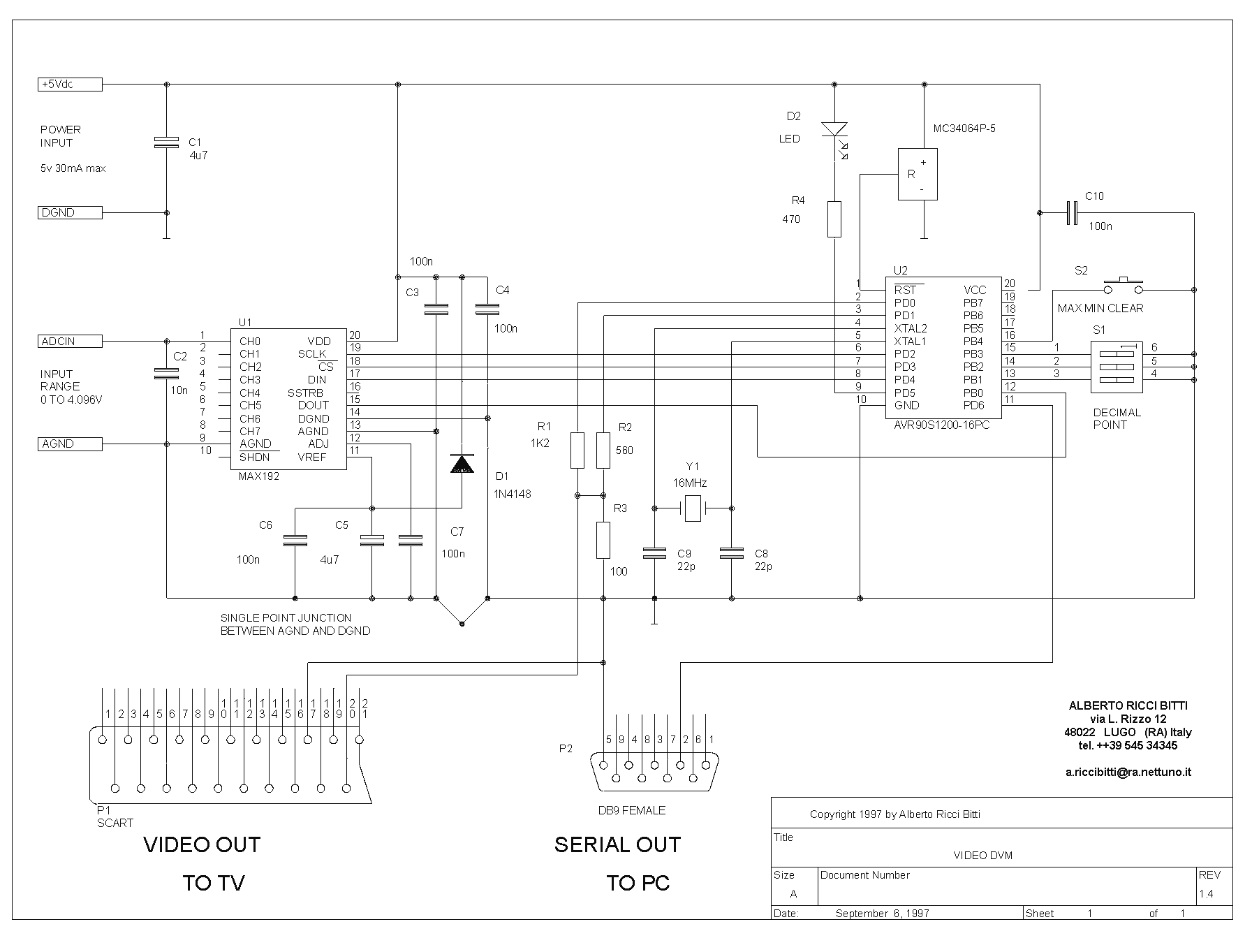
Video modulator 2
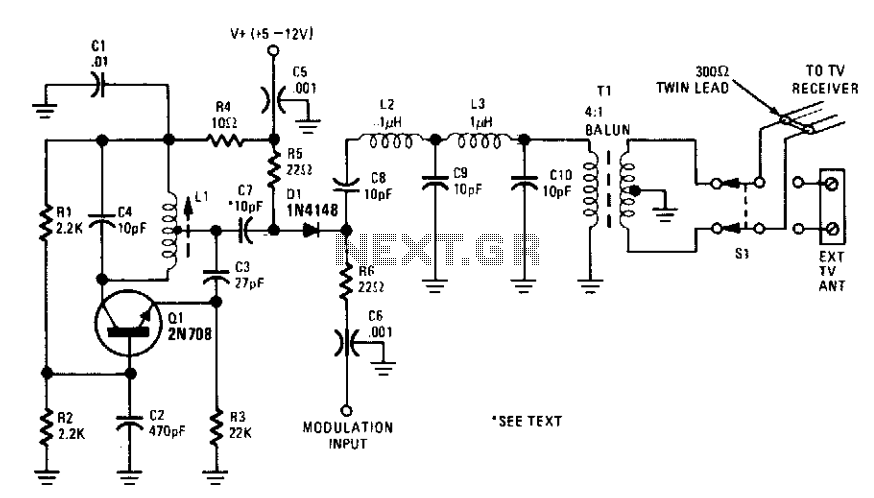
This circuit allows for the direct connection of composite video signals from video game consoles and microcomputers to the antenna terminals of television sets. The output signal level is regulated by the modulation input.
The circuit is designed to facilitate the integration of composite video sources into television sets that may not have dedicated composite inputs. It typically employs a modulator that converts the composite video signal into an RF signal suitable for transmission over the antenna terminals. This is particularly useful for older television models that rely on antenna inputs for video signal reception.
The circuit may include components such as resistors, capacitors, and an RF modulator IC. The modulation input serves as a critical control point, allowing users to adjust the output signal level to ensure optimal performance and compatibility with various television sets. The design may also incorporate filtering elements to minimize interference and enhance the clarity of the video signal.
In operation, the composite video signal is fed into the modulator, which processes the signal and outputs it at a frequency compatible with the TV's antenna input. Users can select the modulation frequency to avoid interference with other channels and to achieve the best possible picture quality. This circuit is particularly valuable for retro gaming setups or for connecting legacy computer systems to modern displays.This circuit permits direct connection of composite video signals from video games and microcomputers to the antenna terminals of TV sets. The output signal level is controlled by the modulation input. 🔗 External reference
The circuit is designed to facilitate the integration of composite video sources into television sets that may not have dedicated composite inputs. It typically employs a modulator that converts the composite video signal into an RF signal suitable for transmission over the antenna terminals. This is particularly useful for older television models that rely on antenna inputs for video signal reception.
The circuit may include components such as resistors, capacitors, and an RF modulator IC. The modulation input serves as a critical control point, allowing users to adjust the output signal level to ensure optimal performance and compatibility with various television sets. The design may also incorporate filtering elements to minimize interference and enhance the clarity of the video signal.
In operation, the composite video signal is fed into the modulator, which processes the signal and outputs it at a frequency compatible with the TV's antenna input. Users can select the modulation frequency to avoid interference with other channels and to achieve the best possible picture quality. This circuit is particularly valuable for retro gaming setups or for connecting legacy computer systems to modern displays.This circuit permits direct connection of composite video signals from video games and microcomputers to the antenna terminals of TV sets. The output signal level is controlled by the modulation input. 🔗 External reference
